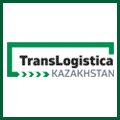Publication headlines:
- Dynamar’s proprietary Car/Cap Ratio shows that since 2005 (=100), carryings have, on average, fallen short by 35% compared to the increase of capacity, in other words:
- Since 2005, capacity of the Top 25 Operators has grown 35% faster than their carryings
- Over the five-year period 2009/2013, carriers consistently forming part of the 20 largest operators:
o carried 538 million TEU
o realised a revenue of USD 748 billon
o sustained net losses totalling USD 12.5 billion
- Eighteen of the Top 25 carriers control 100% of all ULCS capacity operating and 97% of the ULCS orderbook
- Five European carriers control 50% of the Top 25 container shipping capacity with 44% by shipping companies from the Far East
World’s largest carriers
Dynamar has issued the 12th edition of its annual Top 25 Container Liner Operators publication. It offers an exclusive insight into world’s largest container shipping companies, their histories, natures, characteristics, developments, strategies, relationships and performances.
The publication’s introduction is already highly interesting. It opens with a summary of the Top 25 carriers looking at their operated vessel fleet, capacity, carryings, container box fleets, ULCS details, alliances, subsidiaries and trade lane coverage, amongst others. Furthermore, it includes financial results for the full year 2013 and for the first 9 months of 2014. For the five-year period 2009/2013, a summary of main performance and financial parameters is provided for those operators consistently forming the Top 20. It concludes with the shares of operated vessel capacity by region of control and by company type.
O come, all ye faithful
Cost reduction, in the form of ever-larger less fuel consuming and more efficient ships has been the answer of many of the Top 25 container liner operators to their constantly declining revenues. Under the stagnating markets, as it has been the case for a number of years now, the paradox is that this growing fleet of increasingly bigger leviathans exacerbates over-capacity.
Over-capacity has a detrimental effect on rate levels, inducing a further need for cost reduction … and there we go again! The present largest operating ULCS (Ultra Large Ships of over 10,000 TEU) is one of nearly 19,000 TEU just commissioned by China Shipping. MOL and OOCL are said to be negotiating 20,000 TEU monsters, while 22,500 TEU up to even 24,000 TEU goliaths are on the drawing boards of some classification societies.
All sixteen of the Top 25 carriers nowadays operating on the Europe-Far East run (ZIM has pulled out), world’s largest deepsea trade, have acknowledged the need of coming together to fill the 250 ULCS they were deploying by early December. The names of the four groupings have quickly become familiar to everybody involved in the movement of goods by sea between the Far East and Europe and on the Transpacific and Transatlantic routes.
They generally have rather prosaic names from which the number of participating shipping companies can be derived easily: 2M, CKYHE Alliance, G6 Alliance and Ocean Three. All have obtained the US Federal Maritime Commission’s blessing and will be tolerated by China and the European Commission as long as they go by the competition rules. January 2015 is the month that all consortia will be operational in full. Coinciding with this, in January Dynamar will publish its special report “East-West Container Trades, the Alliances routes”.
Changes will be most radical for the 2M (Maersk Line and MSC) and Ocean Three (China Shipping, CMA CGM and UASC) carriers. For them, in many cases there will be a goodbye to lines with whom they may have been co-operating during many years and which could now become their severest competitors.
Together with background information on the emergence and history of the alliances phenomenon, the Top 25 Container Liner Operators report contains an extensive chapter on each of the East-West Alliances and their partners.
Big ship shivers
Back to the ULCS: effective 1 December, 261 (to be precise) ships larger than 10,000 TEU were operated by sixteen of the Top 25 carriers, while another 143 units were on order. Their capacities range between 10,000 TEU and around 19,000 TEU. The average nominal capacity of all existing and coming ULCS is 13,500 TEU.
It is a fact that, with 130 units, the 13,000/13,999 TEU-ship can be considered the present working horse of the long haul East-West trades, making up for 32% of all ULCS and capacity. However, it is amazing how fast the segment of vessels larger than 18,000 TEU is growing.
When Maersk Line ordered the first ten of ultimately twenty 18,300 TEU Triple-E class vessels in early 2011, the Danes may have thought (once again) to have taken a decisive lead. Not really! Today, the 18,000 TEU fleet counts 43 vessels, of which 30 still to be delivered over the remainder of 2014 and into 2017. What’s more, six ships with a stated capacity of over 19,000 TEU have meanwhile been signed for. In addition to Maersk Line, just three carriers are responsible for this 18,000+ TEU deluge, in part supported by or may be even induced by “new capital”: China Shipping (5 units), MSC (18) and UASC (6).
That all said, the effective nominal TEU capacity of all these giants has to be awaited: it can be more than 19,000, but also a little bit less than 18,000, much of it depending on the actual number of empty boxes to be accommodated. With 18,980 TEU, the recently delivered first of China Shipping just falls short of her last declared 19,100 TEU. The same goes for three referred to 18,000 TEU units of CMA CGM, actually to measure 17,860 TEU.
The almost excessive number of ULCS planned for 2016 delivery is sending shivers through the industry: 65, having a capacity of nearly one million TEU. This is equal to a share of 5.4% of the existing container vessel fleet, of which 1.3% was in lay-up on 1 December. Another one ULCS per week can be looked forward to in 2016: 51 vessels/700,000 TEU nominal capacity. A lot of economic recovery over the next two years will be required to digest them all.
In addition to fleet details in all profiles, an overview of all ULCS operating and on order by size category and by individual carrier is also part of the Top 25 Container Liner Operators report.
Financial shivers
During the last five years, i.e. 2009 through to 2013, eleven of the Top 25 publishing their relevant financials made an operating profit only once. That was, without exception for all of them in 2010, the liner trades recovery year following the steep fall during the 2009 worldwide economic/financial crisis, when nearly all carriers were operating in the red.
Even the mighty Maersk Line had to accept two very negative EBITs in the 2009-2013 period. However, its three-year profits exceeded two-year losses by nearly USD 2.5 billion. Three companies did quite well by achieving operating profits during four of the five years period: CMA CGM (five-year aggregated USD 4 billion), Hapag-Lloyd (USD 1.7 billion) and OOCL (USD 1.1 billion).
In all, on the 538 million full TEU they lifted over 2009-2013, carriers consistently forming part of the 20 largest operators achieved a revenue of USD 748 billon. A lot, but not enough to prevent them from sustaining net losses totalling USD 12.5 billion, an average of USD 2.6 billion per year! A meagre operating margin of just 1.6% is their reward for five years of hard work.
Each of the 25 carrier-profiles open with a single-page 5-year overview of core financials, as well as a variety of relevant ratios and indexes (2005=100), all in addition to nucleus corporate data.
Relief, but with a but
Considering the Top 25 carriers’ overall quite miserable financial results, their desire to deploy as many maximised-efficiency ships as can is everyway understandable. What may further help is the falling prices of crude oil, which earlier this month reached their lowest level since August 2009.
In week 50, in Rotterdam USD 323 was charged for one ton of IFO 380 Cst. This compares to USD 725 in March 2012. Among the positive effects for carriers is the fact that the application of Bunker Adjustment Factors (BAF) is usually lagging behind. All carriers having reported nine-month 2014 financials are referring to improved results because of lower fuel prices.
However positive the much lower oil prices may seem, they could well present a perhaps unexpected problem. Carriers have clearly stated having every intention to continue slow steaming as is, not at least as merchants have become used to it and adapted their supply-chains. But if bunker prices continue falling, the tipping point at which the up to four (in a North Europe-Far East sling) extra ships could no longer be financed from fuel savings will be nearing fast. Reduced revenue from BAFs would only contribute to that. Consequently, the number of ships in lay-up, something costing money too, would rise dramatically, in the ULCS category in particular.
Nine-month 2014 financials and the issue of Slow Steaming is an item in various of the Top 25 Operators profiles and elsewhere in the report.
More …
Many more topics and subjects than the above are discussed and analysed in the core of Dynamar’s “Top 25 (2014) Container Liner Operators” which consists of the profiles of each of the individual Top 25 carriers and their affiliated companies. In summary, each profile contains:
• An opening page of at-a-glance key details, amongst others showing the company’s progression since 2005
• A history and corporate background section: how the carrier got to where it is today
• Operated containership fleet and orderbook development
• Trade lanes and markets served as a vessel operator and as a slot-charterer
• Overview of interests in container terminals worldwide
• Summary of container-related and other relevant affiliations or activities
Concluding the study is a separate chapter on Alliances, Consortia and the like. This includes profiles on each of the existing and 2015 to be launched East-West Alliances. Then there is a comprehensive listing of all known North-South and regional consortia, as well as conferences and discussion agreements, concluded with a glossary featuring all major, main and regional/feeder trade lanes along which the Top 25 are active (as vessel providers) listed by trade and country.
Dynamar B.V. (Alkmaar, The Netherlands)




.jpg)






